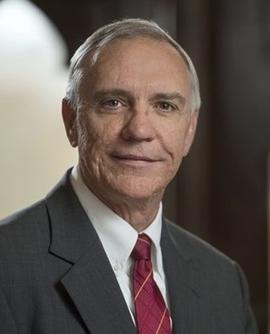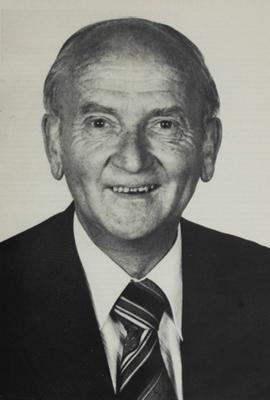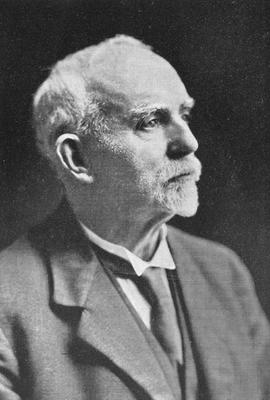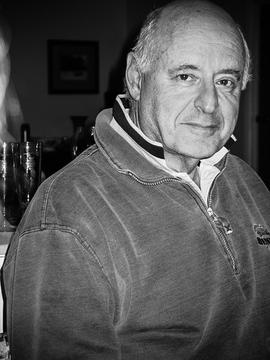Showing 4561 results
Authority records- Person
- 28th June 1942 -
Class of 1960
First editor of College Chronicle, 1960.
- Corporate body
- 1898 - 1973
Early Methodist Church in Johannesburg.
Demolished 1973.
- Corporate body
- 1953 -
Established by the Trust in 1953.
Body with responsibility for the overall governance of the College.
https://www.stithian.com/content/page/governance
- P000001
- Person
- 7th October 1856 - 30th December 1937
Founder and benefactor, born in the village of Stythian, Cornwall from which the College name is derived.
• Born 7th October 1856 at Menorlue hamlet to the west of the village of Stithians. Died c. 30th December 1937 at the age of 81.
• Family (relatively poor) were devout Wesleyan Methodists. Attended Stithian Village School and then a private school in nearby St Day.
• Apprenticed at age 14 (1870) to Martin family of carpenters.
• Eventually moved to Falmouth and apprenticed in the building trade.
Collins and Mountstephens had much in common: apart from being tradesmen and of similar age, they were both Methodists, non-smokers and teetotallers. Having completed their apprenticeships, they realised that Britain had few opportunities to offer them. In the second half of the 19thC, a period of devastating hardship in Britain, eight million people emigrated of which 146,600 of them were from Cornwall.
Collins and Mountstephens were originally headed for the USA, but fate dealt the two impatient and impulsive young men a significant hand. The ship on which they were destined to sail to the USA was delayed a few days. Instead, they boarded the SS Teuton to South Africa. They landed in Cape Town on 19th September 1880. Although offered positions in Cape Town, they went to Port Elizabeth where there was an even greater demand for their skills.
Attracted by what the discovery of diamonds offered, they set off in June 1881 for Kimberley. Here, they secured building contracts and were eventually able to establish their own building company. By 1886 they were ready for a new challenge and headed for Johannesburg where they established Mountstephens and Collins (Pty) Ltd at Oriental Chambers, 36B Pritchard Street and also invested in mining shares. Collins also invested in the Cape Fruit Farms company. Both businesses prospered, attributed to their sound work ethic, their business acumen and their sobriety.
In Johannesburg they met with Charles Leake, a fellow Methodist, at whose offices, the first Methodist Church services were regularly held on Sunday mornings. It was this small group of men who brought the Methodist Church to the Witwatersrand. At the time, Johannesburg was little more than a dusty mining camp inhabited by miners, adventurers, traders, tradesmen and con artists with limited access to the goodwill of any church. Mountstephens and Collins also encountered imperialists such as Rhodes and Jameson as well as the Transvaal’s President Paul Kruger.
Although Mountstephens and Collins Ltd made little progress during the Anglo-Boer Wars, the business flourished after 1902. The partners were able to contribute to the building of the Central Methodist Church in Johannesburg. Here they met Daniel Corlett, Leslie Kent and also Gilbert Tucker. Tucker became their accountant, a close friend, a trustee and a significant player in the founding of St Stithians. Leake and Kent also became trustees and Corlett’s company was hired to construct the original College buildings.
Collins remained a bachelor, living frugally in a single room in a building occupied by his company. He spent much of his time writing letters to his relatives living in England and New Zealand and keeping the company books. He was considered by many to be poor but could not be persuaded to indulge in the luxury of a flat.
Collins and Mountstephens had to be persuaded to leave a legacy to an educational institution as they believed that education was the duty of the state. However, Gilbert Tucker, himself an alumnus of Kingswood College in Grahamstown, convinced them of what could be achieved by establishing a Methodist school in Johannesburg. Collins and Mountstephens realised over time that state schools did not offer what they considered to be a good education: an emphasis on Christian principles and the development of leaders in social matters. Eventually they were persuaded to leave the residue of their estates to the founding of a Methodist school: St Stithians College.
• Collins died in Johannesburg in 1937 leaving a bequest to numerous charities both in South Africa and in the UK. Local beneficiaries included Methodist churches, Children’s homes, the Salvation Army, Orphanages, the YMCA, charities for the visually and physically impaired and the elderly, trades schools and the University of the Witwatersrand. Beneficiaries in the UK included children’s homes, the Royal Naval Lifeboat Association, hospitals and charities in and around his home village.
• Collins bequeathed the residue of his estate to St Stithians Trust which amounted to £42,000 (This is the equivalent of over £5 million or R68.1 million today.)
Collins’s estate was so large that it took three years to wind up, hence it was not until February 1941 that the first meeting of the Trustees took place. Mountstephens was present at the meeting and proposed the naming of the trust as the St Stithians Trust which was formally founded on 30th April 1941.
Committee for European Education
- Corporate body
- c.1964
Sub-Committee of the Methodist Church at the time it was attempting to become part of the HMC.
Conference of Headmasters and Headmistresses of Private Schools of South Africa (HMC)
- Corporate body
- 1929 - ?
Precursor of the ISC and ISASA, founded on the same basis as the British HMC.
For a detailed history of the HMC see Squelch, J M (1997) Private schools in South Africa: the legal status and management of private schools. UNISA Doctoral thesis. https://core.ac.uk/download/pdf/43175412.pdf
This work refers extensively to interviews with Mark Henning, former Head of St Stithians and of the ISC.
- Person
- 1996 - 2016
BC Music teacher: Wind, Jazz and Orchestra
Deceased whilst in service to the school (aged 82).
- Corporate body
- c.1920 - ?
Construction company responsible for the erection of the original school buildings. Company founded by Daniel Fargher Corlett.
Corlett House is named after DF Corlett.
- Person
- c1877 - 1960
Daniel Fargher Corlett emigrated to South Africa in 1897 from Ballaugh on the Isle of Man in the United Kingdom. He served time with his father, taking charge of the family business. Like many other young fellows possessed of energy and ambition, he realised the limited opportunities in his native land, coming direct to Johannesburg. He secured employment with Messrs. Prentice & Mackie, the well-known contractors, and was with them at the outbreak of the Anglo Boer War in 1899. During the conflict, Corlett served as a sergeant in Bethune's Mounted Infantry of the British Army. On his return he took up his old position with Messrs. Prentice and Mackie.
Before long, he formed he formed his own construction company: Corlett Construction and joined the Witwatersrand Master Builders' Association. The building in the Maboneng precinct in Johannesburg which housed his company offices still remains and is is now a Blue Plaque Heritage building. Through his connections with the Methodist Church and with Gilbert Tucker, Collins's accountant and his involvement with the Trust, Corlett's construction company was contracted to erect the first school buildings at the College.
Corlett was elected a member of the executive of the Association in 1909, eventually becoming president in 1916. Mr. Corlett's keen business abilities were at that time directed towards the establishment of the National Federation of Building Trade Employers upon a sound foundation, and at this period the organisation was greatly in need of his skills. Mr. Corlett was appointed hon. treasurer of the National Federation in 1916, at which time the Federation was working under a bank overdraft. When he had occupied this position for three years, such was his organising, that he was able to hand over the finances in a flourishing condition to the newly-appointed honorary treasurer. The National Federation owes its present successful position in no small way to Mr. Corlett's foresight and business acumen. Mr. Corlett occupied the position of vice-president to the Federation in the years 1919 and 1920, and was elected president in 1921, so that including the year of his presidency, he was actively engaged as an officer of the Federation for six years.
Not only was Mr. Corlett involved in the construction industry, but he also gave much of his time to social organisations: he became vice-chairman of the Juvenile Affairs Board in Johannesburg, was a member of the Witwatersrand Government Apprenticeship Committee, vice-chairman of the Governing Body of the Johannesburg, High School for Girls, a director of the Rand Provident Building Society, and a member of the Committee of the Rand Aid Association. In 1941 he became a founding Trustee of the St Stithians Trust, which he served until 1959, shortly before his death. He was also involved in civic life and became Mayor of Johannesburg from 1931 - 1932. Corlett's favourite hobby was golf, and he was a member of the Country Club and of several other golf clubs.
Corlett's name is immortalised in one of Johannesburg's most well-known streets, Corlett Drive, which goes past the Wanderer's Cricket grounds. It is also inscribed on the foundation stone of the landmark Johannesburg Library and it is painted on his old office which is now home to the popular Arts on Main in the Maboneng Precinct. But who was D.F. Corlett? The following article published in the gives some insight into the man.
Corlett House and the Corlett Gates (on Bram Fischer Drive) are named in his honour.
His descendants include the Mitchell, Cresswell and Angus families, a few generations of which have been pupils at the College.
Sources:
- South African Builder, September 1923 (https://www.artefacts.co.za/main/Buildings/archframes.php?archid=2798)
- The Heritage Portal (https://www.theheritageportal.co.za/article/who-was-corlett-corlett-drive)






